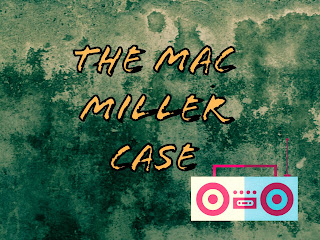The Tonawanda Coke Plant
Tonawanda, New York is a suburb
between Buffalo, New York and Niagara Falls, New York. Additionally, a portion of the town is next
to the Niagara River – which shares a border with Canada. The town is a typical suburb that has many
families simply going about their daily routine to make ends meet. Most of the main streets are filled with
plazas that have franchise eateries and shopping centers, and the citizens do
not appear to be bothered by the mundaneness.
In this same town there is an industrial park that has some
multi-million dollar corporations – mostly in trucking and manufacturing
practices. It is this part of town that
caused an uproar from the entire Western New York community a few years
back. Specifically, people in the
northwestern part of Buffalo, Grand Island, and, most importantly, Tonawanda
began noticing similar health problems taking place (Fischer, 2017; Rudchyk,
2015). Many citizens and their children
were being diagnosed with the same life-threatening illnesses to be exact (Fischer,
2017; Rudchyk, 2015). Doctors, at times,
also discovered health problems in people from the above-mentioned areas that
could not identified (Fischer, 2017; Rudchyk, 2015). This left everyone scurrying to find the
cause of these terrible problems. When
the community investigation began, authorities tested everything from the
water, soil, air, and even communicated with public officials from Canada to
see if these problems were occurring there and if the source for the health
problems came from the other country (Fischer, 2017; Rudchyk, 2015).
After much worrying and
testing, the Environmental Protection Agency, as well several research
organizations, learned that the air in these areas had a high toxicity level which,
in turn, transitioned into having the soil in the area being heavily contaminated (Fischer,
2017; Rudchyk, 2015). When the toxins
were examined, it was determined to have elements of acetaldehyde, acrolein,
benzene, carbon tetrachloride, and formaldehyde (Fischer, 2017; Rudchyk, 2015). All of which were well-above the legal
limitations (Fischer, 2017; Rudchyk, 2015).
Soon after this discovery, many civil lawsuits were configured as well
as a class action case, and even criminal court processes (Fischer, 2017;
Rudchyk, 2015). Employees of the Tonawanda
Coke Corporation – the company responsible for the pollution – faced criminal
charges for violating the Clean Air Act (Fischer, 2017; Rudchyk, 2015). Many of the victims who filed lawsuits
against the company had to wait – and are still waiting – for the criminal
proceedings to end so that their cases could proceed and have more evidence for
their claims of being harmed (Fischer, 2017; Rudchyk, 2015). After about a year-long criminal case, Mark
L. Kamholz, Environmental Manager for Tonawanda Coke Corporation, was found
guilty of violating federal criminal laws and sentenced to a year in federal
prison (Fischer, 2017; Rudchyk, 2015).
The company was also given a stiff fine and was ordered to also pay for
a multi-million dollar study of the toxicity of the area’s air, water, and soil (Fischer,
2017; Rudchyk, 2015). The results of the
aforementioned study are still being produced, and the civil suits are still
lingering in federal court as citizens are dealing with their health concerns
without much assistance from their legal actions (Fischer, 2017; Rudchyk, 2015). Some citizens have been partially relieved
and allotted monies for their health problems, yet the federal civil court matters
seem to be taking longer than expected (Fischer, 2017; Rudchyk, 2015).
All of this is a great
example of the intricacies of white-collar crime in our times. The Tonawanda Coke Corporation was forced to
pay fines and fix any problems that were contributing to the pollution, yet
they are still in business, still making millions of dollars, and only one
person was convicted of a criminal offense and received a very light sentence (Fischer,
2017; Rudchyk, 2015). The citizens in
the area were not only victimized by the corporation’s negligence, but also by
the federal justice system. Meaning that
the lenient sentence for the environmental manager and the lengthy civil
procedures that have yet to fully rectify any of the harms that the citizens in
Western New York endured is problematic.
This is, unfortunately, typical in white-collar crime cases, and the
civil justice system tends to cater to wealthy defendants more so than citizens
in a particular or general manner (Friedrichs, 2010; Reiman & Leighton,
2017). Long-term problems for the
victims seem to be uprooted by short prison sentences and civil matters that
may take so long that any benefits from a civil proceeding for the victims may
be pointless when they are delivered.
References:
Rudchyk,
M. (2015, February 16). Air pollution in Tonawanda (N.Y.) sickens and
kills,
according to pending
civil suits. Sustainability and Environmental Justice.
Retrieved from http://sustainabilityjjay.org/2015/02/air-pollution-in-tonawanda-n-y
sickens-and-kills-according-to-pending-civil-suits/.
Fischer, N.
(2017, March 31). Soil
contamination studies near Tonawanda Coke explained at
public forum. The
Buffalo News. Retrieved from
http://buffalonews.com/2017/03/31/tonawanda-coke-studies-begin/.
Friedrichs, D. O.
(2010). Trusted criminals: White collar
crime in contemporary society (4th
ed.). Belmont, CA:
Wadsworth.
Reiman, J., & Leighton, P. (2017).
The rich get richer and the poor
prison get prison:
Ideology,
class, and criminal justice (17th ed). New York:
Routledge. 

Comments
Post a Comment